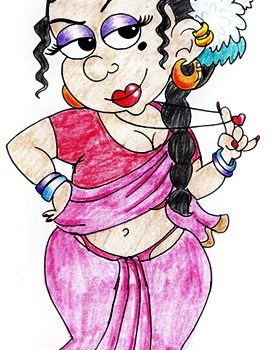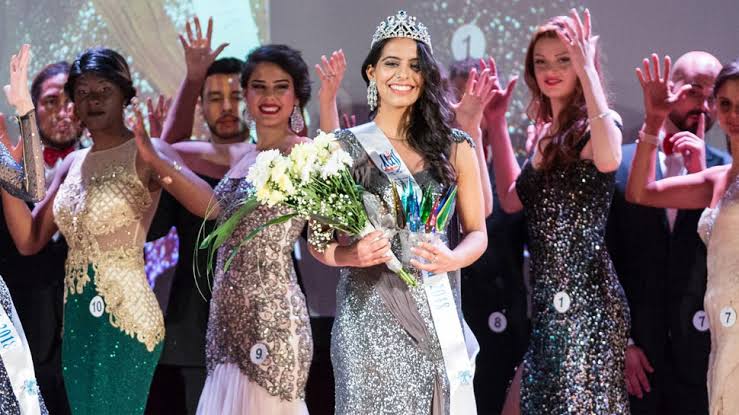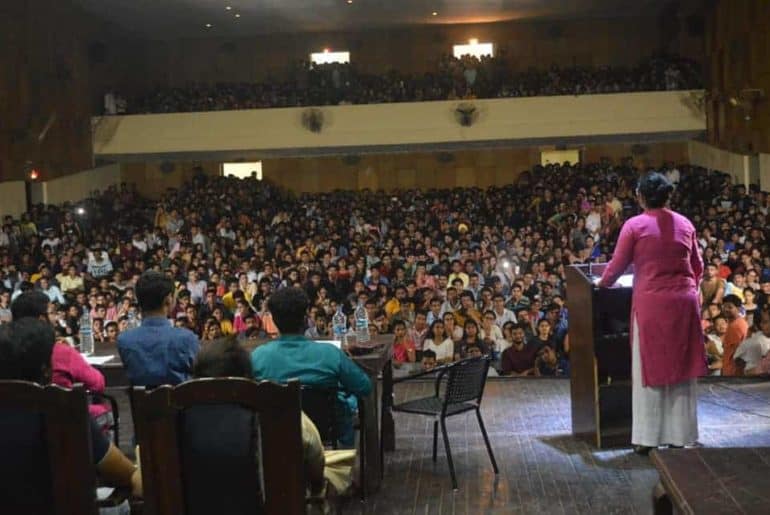Backbeat, the music society of Ramjas College of DU, alleges being harassed and thrown out by the administration of IIT Kanpur at Antaragni 2018.
The team from Ramjas College reached Kanpur on the 24th of October. Members of the team allege that there was a delay of about three hours to get them checked into their rooms. They claimed that the rooms allotted to the girls hadn’t been cleaned at all and were unhygienic to the point that there were sanitary napkins thrown here and there in the washroom. The second problem was that the room wasn’t entirely allotted to the girls from Ramjas College. The administration had apparently told them that only six-seven more girls from different colleges would be staying in the room, and yet, the next morning 30 more girls barged into their room.
After a heated argument that ensued with the coordinator, the girls were provided a three-bedroom flat in the non-teaching staff area of the campus. At around 1:15 – 1:30 a.m. of the penultimate day of the fest, the girls received a call at their accommodation, assumingly by the IIT Kanpur electricity board on grounds that there is a logistical complaint regarding their flat. However, the girls claimed that they had neither made any such complaint nor was there any issue regarding the electricity. The callers kept on asking for the house number of their accommodation even after they had been told that there is no problem or complaint made by them regarding the electricity. Eventually, the girls cut the call without divulging information about the house number, thinking it to be some silly prank. However, they claimed that they were alarmed and called the other members of the society about 20 minutes after the incident had taken place. The male members had been given an accommodation facility about 2.5 kms away from that of the girls and had to walk the whole distance in the night.
After half an hour of the phone call, there was heavy knocking on the door. The same persisted for around five to ten minutes, without any voice or explanation. The Backbeat members further claimed that in an attempt to protect themselves, they went to the end of the room and armed themselves with whatever they could find and did not open the door. Ten minutes after the banging had ceased, the male members reached the girls’ accommodation and made the guards check the whole building. The guard did claim that a certain individual from the students’ team was there at the door and then kept changing his statement as to who it was. Later, the police arrived at the scene and the security guard apparently changed his statement and admitted to be the person who knocked on the door saying that it was a routine patrol.
While on the way to a new accommodation, the students were stopped by the officials who claimed that they had a meeting with the chairman who deemed them (Backbeat) as ‘anti-social’ elements and a threat to the fest. The officials then demanded the students to vacate the premises at the earliest. The students immediately asked for an official notice for the same and were told, “Fifteen-twenty minutes main bhago nai toh maar ke bhagayenge” (Evacuate within fifteen-twenty minutes or we will hit you till you’re forced to leave).
As the male members made way to their hall, they were greeted by a horde of guards who were stationed to ensure that they pack and leave immediately. After a while, a car stopped outside the hall and the IIT Registrar allegedly stepped out and started pushing the society kids around. The members claimed that this behaviour also hurt one of the kids who had visual impairment.
In the video posted by Backbeat on its Instagram page, an adult can be heard saying, “Thappad marunga keech ke, dimag theek ho jayega sab“, in response to “Bhaiya, haath mat lagao.”
The incident caused a major stir in the music circuit of Delhi University, with several societies sharing the video on their respective platforms. “It is important for people to know what really happened and to voice out against this unjust behaviour and call out the perpetrators to accept punishment for their wrongdoings. Stand with Backbeat. Stand with Justice,” said Neeraj Brahma Boro, a member of the Music Society of Kirori Mal College. There can be valid reasons to debar the participation of any society for misconduct, however, to ask an outstation society, with female members, to vacate accommodation immediately in an unfamiliar city (Kanpur) compromises the safety of students. The organisers should address this issue with the utmost importance as it sets a wrong precedence and may discourage the future participation of outstation societies.
DU Beat correspondents contacted the members of Antaragini’18 team but didn’t get any statement as the representatives refused to comment.
Feature Image Credits: DU Beat
Haris khan









